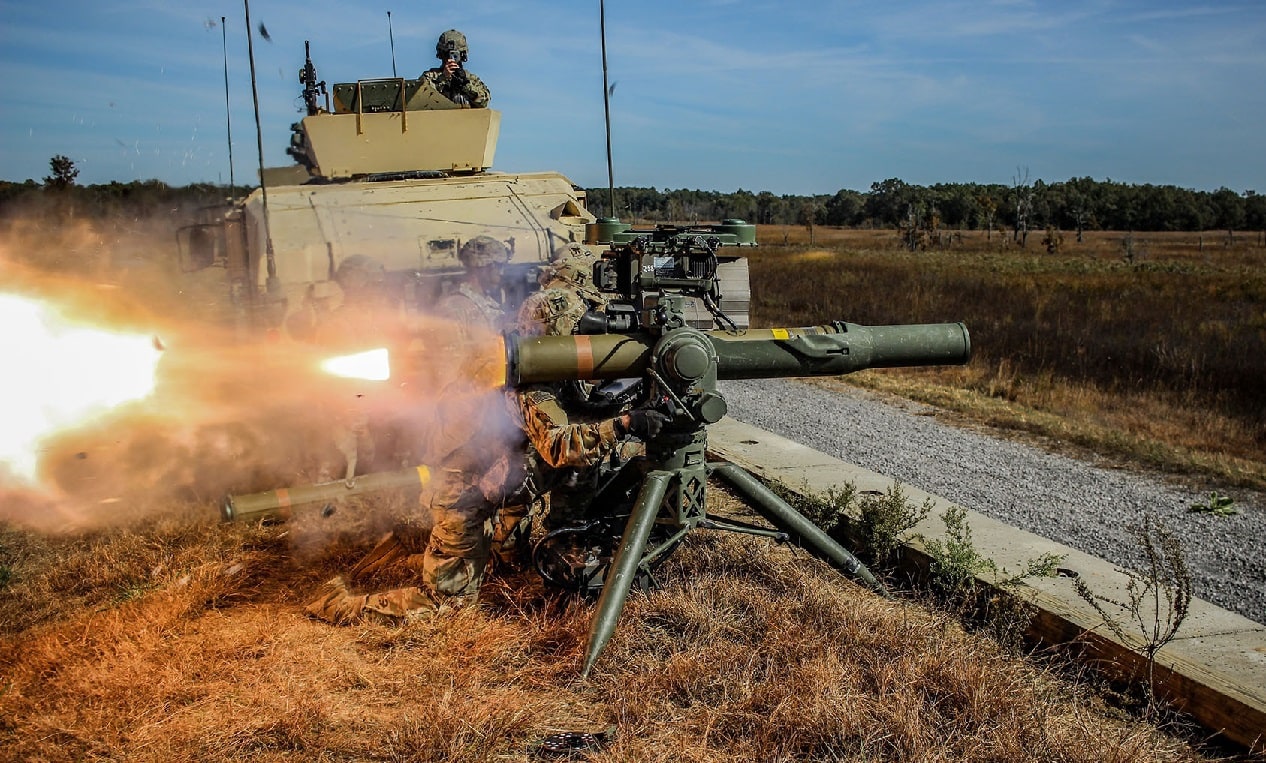This week, Ukraine Weapons Tracker published a new video on Twitter depicting the significant role the American-made TOW missile is playing in the war against Russia. In the footage, the tube-launched, optically-tracked, wire-guided anti-tank missile is fitted to a Humvee before firing at an enemy position. Armored vehicles allow Ukraine to move soldiers to the front lines and muddy terrain. While armored vehicles are no combat tanks, their ability to sport a TOW anti-tank missile launcher will help Ukraine retake territory occupied by Russia.
Brief History of TOW Missiles
The first time that U.S. troops fired homegrown missiles under wartime conditions was when they used TOW missiles during the Vietnam War. Since 1972, the anti-tank missile has become a staple weapon for various domestic and foreign armored vehicles. Since the TOW’s introduction to service more than five decades ago, multiple variants sporting improved capabilities have emerged. Through the years, the weapon’s production variants included the TOW2A (BGM-71E), the TOW 2B (BGM-71F), the TOW 2B Aero and TOW 2A bunker buster (BGM-71H). The TOW is now equipped with a wireless guidance system, in addition to an extended probe for greater standoff, hardware improvements, and an enhanced flight motor.
The TOW’s Evolution
As explained by Army Technology, “The missiles can be fired from the ground using a tripod-mounted launch tube or installed on vehicles. The TOW missile system can be fitted as a single-tube pedestal mount on military vehicles or as two-tube or four-tube under-armor systems on vehicles such as the improved TOW vehicle M901, Desert Warrior, Piranha, US Marine Corps LAV, Dardo Hitfist and Bradley M2/M3.” The TOW also possesses command to line-of-sight guidance — the operator uses a telescopic sight to view an exact point on the target before firing the missile. Today, more than 40 armies around the world use the TOW weapon system, which is integrated on roughly 15,000 ground and aerial platforms.
The TOW’s current manufacturer is Raytheon Missile & Defense, which refers to the anti-tank missile as “the premier long-range, heavy assault-precision anti-armor, anti-fortification and anti-amphibious landing weapon system used throughout the world today,” adding that the “TOW missile enables ground forces to achieve overmatch against adversary armored and wheeled systems, regardless of the environment or conditions.”
More Armored Vehicles to Ukraine
Both Russia and Ukraine have suffered heavy losses to armored vehicles. In March, several Western nations announced plans to provide Ukraine with advanced tanks. Poland, Sweden, and Germany will send additional Leopard 2 tanks, and the U.S. is set to deliver 21 M1 Abrams main battle tanks. As springtime temperatures replace the brutally cold winter months in Ukraine, a ramp-up in combat is expected. Western nations are hoping that an influx in sophisticated armored vehicles will aid Ukraine’s defensive efforts.
Maya Carlin, a Senior Editor for 19FortyFive, is an analyst with the Center for Security Policy and a former Anna Sobol Levy Fellow at IDC Herzliya in Israel. She has by-lines in many publications, including The National Interest, Jerusalem Post, and Times of Israel. You can follow her on Twitter: @MayaCarlin.

